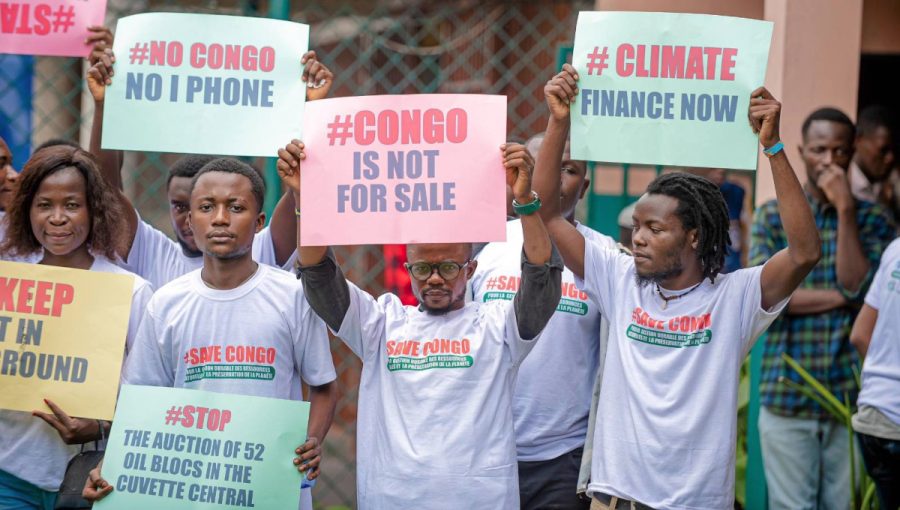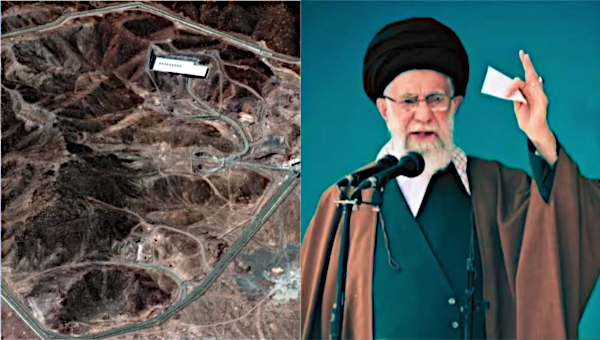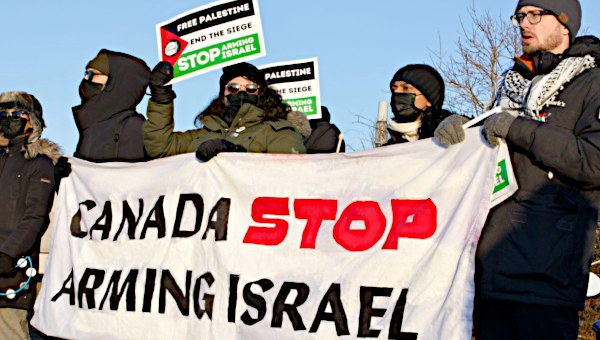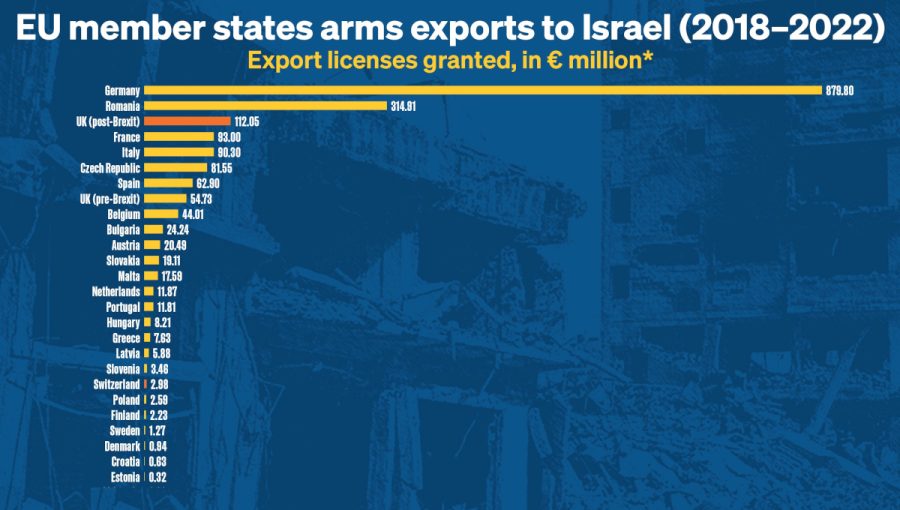From World War II to Gaza: U.S. Labour Opposition to War and Fascism
At a labor press conference/rally on December 14 in front of the White House, Brandon Mancilla – child of Guatemalan immigrants and director of United Auto Workers (UAW) District 9 – announced the union’s call for a cease-fire in Gaza noting: “We opposed fascism in World War II, we opposed the Vietnam War, we opposed apartheid South Africa and we mobilized union resources in that fight.”
This was amplified in a subsequent UAW statement that added opposing the Contra War to the precedents behind the union’s demand for a ceasefire. That history is a reminder that when unionists call for a ceasefire and justice for Palestinians, they are acting within a tradition of international solidarity that links domestic struggles against corporate greed with international struggles against war, racism, and injustice.
To understand the growing support within union ranks for an end to unconditional US military and financial support for Israel in its conduct of a brutal war, it is important to look back at the legacy to which the UAW statements refer.
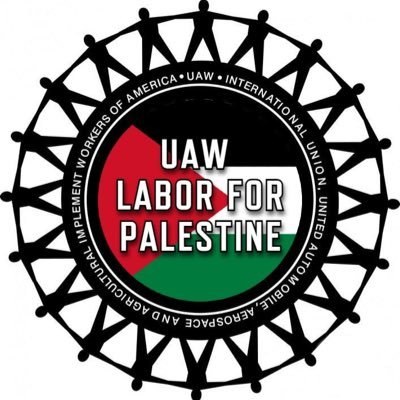
World War II
For unionists in the United States and throughout the world, the Second World War was a war against fascism, a war against the brutal destruction of labor organization; it was a war against anti-Semitism, against racism in its every manifestation – and it was a war to make military aggression a crime.
While disagreements existed within union ranks about how best to contribute to the defeat of fascism while upholding worker rights domestically, there was overwhelming agreement around the need to do both. For many anti-fascists inside and outside the labor movement, victory in a war forced upon humanity by Nazi Germany, Fascist Italy, and Imperial Japan meant overcoming greed and hunger, unemployment and hopelessness, insecurity and fear, all breeding grounds of hatred. This hope was embodied in the language of the Universal Declaration of Human Rights, which proclaimed the interdependent needs for economic, social, and political rights if peace were to prevail in years to come. The creation of the United Nations was an attempt to give meaning to that promise.
These initiatives came to nought. The effort by European colonial powers – Britain, France, the Netherlands, and Belgium – to hold onto their colonial empires and deny millions the rights to self-determination was an early sign that the promises made during World War II would not be kept without a struggle; so too, visions of US corporate/political global dominance made clear that war and militarism, not peace and justice, would dominate world politics. With the onset of the Cold War, economic, social, and political rights were torn asunder, becoming a source of working-class division. And far from abolishing war, a harbinger of what lay ahead took place on August 6 and August 9, 1945, when the United States dropped atomic bombs over Hiroshima and Nagasaki. Victory on the battlefield can be its own curse if what follows is the illusion that destructive violence can be the basis of creative freedom and universal justice.
Yet an alternative vision of a world of peace, of the need for a determined struggle to make peace a reality, remained. The need for a different path was expressed by Turkish poet Nazim Hikmet (imprisoned throughout the war and thereafter) in verses written in 1956 in the imagined voice of a girl killed in Hiroshima; a poem later put to music by Pete Seeger:
I need no fruit, I need no rice
I need no sweets nor even bread
I ask for nothing for myself
For I am dead, for I am dead
All that I ask is that for peace
You fight today, you fight today
So that the children of this world
May live and grow and laugh and play.
Peace or war, justice or oppression, were and remain dividing lines domestically as New Deal ideals gave way to Cold War realities. Normalization of a permanent war economy served as a substitute for an alternative economic model based on democratic input. That necessitated a lessening of internal union democracy, coincident with the weakening of civil liberties within society.
Yet notwithstanding the path of subsequent developments, the anti-fascist posture of organized labor during World War II, the democratic ethos it embodied, the international solidarity at its heart, remained a touchstone of union social justice activism and global solidarity in the years ahead.
Vietnam
Post-World War II contradictions came to a head during the war in Vietnam, costing the lives of nearly two million Vietnamese and tens of thousands of American soldiers, with countless more wounded in both countries, in addition to millions of victims in Laos and Cambodia/Kampuchea. Throughout this time (1960s to mid-70s), the AFL-CIO and most national unions strongly supported the bombing campaign, the draft, the commitment to troops on the ground, and every call to expand the scope of our military engagement. A significant section – likely a majority – of union members and the broader working-class similarly supported the war at first, but unlike the dominant leadership of the AFL-CIO, opposition in labor’s ranks, opposition among working people overall, grew as the reality of the cost of fighting mounted.
Part of the growing cynicism about the value of killing and dying in Vietnam was due to mounting evidence of the lies upon which the war was based. Soldiers were being sent into combat not to defend our way of life (as was said at the time), not to defend the Vietnamese people or a mythical South Vietnamese democracy, but in defense of our corporate power, our military establishment, our imperial project. The dishonesty was put simply in a Tom Paxton song popular at the time:
Lyndon Johnson Told the Nation
Have No Fear of Escalation
I Am Trying Everyone to Please
And though it isn’t really War
We’re sending 50,000 More
To Help Save Vietnam from Vietnamese.
Lingering realities of McCarthyism initially made it difficult to find space – literally and metaphorically – to build an anti-war movement; something even more difficult within organized labor where criticism of the war was deemed “anti-labor”. Some unions in the building trades and East Coast waterfront advocated and engaged in physical attacks on anti-war demonstrators – with sympathetic winks and nods from then AFL-CIO President George Meany.
Walls of repression can only hold for so long. Labor statements in opposition to the war were initially issued by left-wing unions like the United Electrical Workers and the International Longshore and Warehouse Union. Leon Davis, president of Local 1199 hospital workers, publicly condemned the war as early as 1964. District 65’s (Distributive Workers Union) leadership of Cleveland Robinson, Al Evanoff, and David Livingstone all took part in anti-war events, The Packinghouse Workers issued one of the strongest denunciations of the war by a union in 1966. Dolores Huerta of the United Farm Workers also publicly denounced the war in 1966 – the UFW officially announcing its opposition a few years later. Each year that list grew – eventually, the Amalgamated Clothing Workers; the Amalgamated Meat Cutters and Butchers Workers; the American Federation of State County and Municipal Employees; the International Chemical Workers; the International Union of Electrical Workers’ the Oil, Chemical and Atomic Workers; and the UAW called for an end to the bombing, negotiations and withdrawal of US troops from Vietnam.
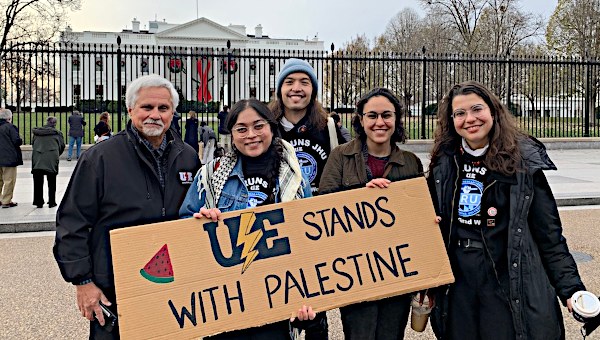
Opposition to the war was rooted in local and regional unions including the St. Louis Joint Council of the Teamsters (led by Harold Gibbons) along with many locals from unions supporting or silent on the war including the Bakery and Confectionary Workers, Furniture Workers, Hotel and Restaurant Workers, Retail Workers, and Steel Workers (including old Mine Mill and Smelter units which had merged into the USW in 1965) to name but a few. Many UAW leaders and locals took a stand against the war well before the national union. Amongst the most vocal was Sam Meyer from UAW Local 259 – part of Region 9A and so part of Mancilla’s heritage. Rank-and-file groupings formed in unions where any dissent on the war was subject to sanctions, including within building trades unions, and the aggressively anti-Communist International Longshoremen’s Association. It was this that made anti-war activism more than statements at a press conference or buried resolutions; rather, they became the source of discussion and mobilization. In virtually all unions, opposition to the war met resistance from sections of the membership, just as unions supporting the war faced membership pushback. Inner-union debate, largely suppressed for many years, could no longer be prevented.
In other words, the rising tide of labor anti-war sentiment served as an assertion of the need for greater democracy within the trade union movement. This reflected a change in mood within the working-class more widely – the vociferous support with which many working people initially greeted the war began to lose steam as the faces of returning veterans became visible, as the economic cost by way of inflation and economic stasis mounted. The sense of society coming apart could not be separated from the senselessness of a war without meaning or endpoint. Coextensive with the growth of peace sentiment in union ranks – though not directly linked – were outbursts of rank-and-file militancy expressed in a growing number of authorized and wildcat strikes.
Although support by many rank-and-file union members for the war continued, it had lessened and became “quieter” – vigilante attacks on student anti-war protesters, by and large, ended after 1970. Critical to growing dissension within union ranks with “business as usual leadership,” was how unrestrained spending on the machinery of destruction reinforced economic hardship; the “war on poverty” – notwithstanding genuine accomplishments – was never funded on a scale remotely comparable to the war waged on Vietnam. Eventually, that “war” against hunger and want, against racial inequality, was largely abandoned.
With the formation of a trade union division within the peace organization SANE in 1966, unionists became part of the wider anti-war movement. Broad labor participation in the 1969 Vietnam Moratorium deepened those connections which were formalized in 1972 with the establishment of Labor for Peace.
Yet, there was no change in the top leadership of the AFL-CIO, which remained committed to the war. If anything, the divide over the war – and over the growing restiveness of working people, which was perceived as threatening to labor’s existing bargaining and political “power” – sharpened. This revealed itself during the 1972 presidential elections when the Federation and most affiliates refused to endorse Democratic candidate Senator George McGovern because of his support for withdrawal from Vietnam, which amounted to a de facto endorsement of Nixon. Top AFL-CIO leaders continued to oppose any steps toward peace, continued to denounce efforts by people abroad to lay claim to their own natural resources, and remained war supporters until the final troop withdrawal.
That, however, is only part of the story. The peace movement in union ranks marked the beginnings of a new more genuine unity below the surface, the revival of the too-long buried outlook that had previously united labor in the fight against fascism by making a connection between civil liberties and civil rights and political and economic democracy. Just as during the Second World War, there were disagreements over how best to organize for social justice here and overseas, but the recognition that these were linked and that labor rights required democratic unions, commitment to equality and peace was rising again to the surface.
South Africa
One of the hopes following the Second World War was that – unlike after the First World War – the commitment to self-determination would apply to countries in Asia and Africa still under colonial rule. Not willing to rely on hope alone, popular movements grew and demands for freedom became unstoppable. The Vietnam War, lest we forget, began in 1946 as resistance against the attempts by France to reimpose colonialism. So too, throughout Africa, from Ghana and Kenya to Guinea and Algeria to the “Belgian” Congo, demands for independence gained greater strength than ever before. By 1961/62, most of the countries on the continent had gained their freedom. However, the limitations of the freedom soon became evident with the murder of the newly independent Congo’s President Patrice Lumumba.
Nonetheless, the gains made throughout Africa during the 1960s were profound. Not everywhere, however, as Portugal held on to its colonies while white settler rule remained in South Africa and Rhodesia (present day Zimbabwe). Those two countries had declared “independence” from Great Britain while retaining the structure of colonial rule that necessarily relied on an unvarnished racism. In South Africa this took shape as apartheid; a system which bore striking similarities with Jim Crow segregationist South. Nelson Mandela recounted in his autobiography a visit by a Southern congressman in the early 1960s to the Robben Island prison where he was being held. That congressman saw nothing wrong with the treatment of the prisoners there, hardly surprising as it was much the same as could have been found in Alabama or Georgia or Mississippi. That similarity reinforced popular understanding that the struggle against apartheid and against racism in the United States were linked.
Recognizing this, solidarity movements grew within the black community and within sections of the labor movement from the early 1960’s on. Notably the ILWU boycotted South African ships in 1962 and again in 1977 and 1984. Other unions that had been early opponents of the Vietnam War, such as the Distributive Workers under Cleveland Robinson’s leadership, added their voices in opposition to South African apartheid especially after the 1960 Sharpeville Massacre when 69 people were killed by South African police during a peaceful protest, Labor activism was, however, initially limited, for the dominant leadership of the AFL-CIO viewed with suspicion the African National Congress and the emerging broad-based independent South African labor movement (which in 1985 took shape as COSATU: the Congress of South African Trade Unions). This was partly due to the Federation’s rigid Cold War mentality, which objected to Communist participation/leadership in the South African freedom movement, partly due to the (related) support for US corporate global expansion, perceived as being in the interests of US trade union members. In consequence, the AFL-CIO took the position that unions had to be “apolitical,” concerned only with bread-and-butter issues.
This logic led the AFL-CIO to criticize South African unions fighting apartheid as a system (for that was “political”), and instead, the Federation supported – with funds and advisors – “approved” segregated unions. But organized labor could not close itself off from what was happening outside its confines – the growing militancy of the African American community in response to the faltering civil rights movement contributed to greater solidarity with movements for liberation on the African continent.
This solidarity became more insistent and reached wider numbers in 1976 after South African police massacred school children in Soweto who were protesting a law to make Afrikaans the language of instruction. Hugh Masakela’s “Soweto Blues,” popularized by Miriam Makeba (both exiled during the years of apartheid) brought the suffering to the wider world:
Soweto blues – abu yethu a mama
Soweto blues – they are killing all the children
Soweto blues – without any publicity
Soweto blues – oh, they are finishing the nation
Soweto blues – while calling it black on black
Soweto blues – but everybody knows they are behind it
Soweto Blues – without any publicity
Soweto blues – they are finishing the nation
Soweto blues – god, somebody, help!
Soweto blues – (abu yethu a mama)
Accusations that violence was “black on black,” that police violence was designed to be “without any publicity,” spoke to the ways the apartheid government sought to hide and isolate opposition to their rule. The myth of South Africa as the continent’s “only democracy,” where black Africans lived better than where they gained self-rule could no longer stand scrutiny. South Africans, in response to violent repression, looked to global solidarity launching a “divestment, sanctions, boycott campaign.”
After the Soweto uprising, and following the 1977 murder, while in custody, of Black Consciousness leader Steve Biko, the AFL-CIO changed its position and began to sharply criticize the South African government and support release of Nelson Mandela and other political prisoners. The Federation, however, opposed the boycott campaign, instead advocating for “constructive engagement” with the apartheid government and corporations, like General Motors, which operated factories there. The Federation’s support of efforts to reform the system, rather than challenge its framework, however, gained little traction, and was rejected by unions in South Africa and increasingly rejected by unionists within the United States.
Reflecting the upsurge in workplace militancy and the growing working-class radicalism of the Black Freedom movement, support for solidarity with South African unionists grew. In the late 1960s and early 70s, an emerging rank-and-file movement took shape in the formation of factory-based black caucuses in the Auto Workers, Steel Workers, and numerous other industrial, craft, and public-sector unions, making the connection between the shared need to undo systemic structures of racism domestically and globally with calls for solidarity with South African labor. During those years, there were relatively few unions with African Americans in national leadership or in key staff positions;in fact, there were unions that ran hiring halls that in practice excluded or segregated black workers. Therefore, demands for greater black representation in local and national union leadership and support for affirmative action hiring practices were core issues for African American workers.
In contrast to the Federation leadership’s attempt to separate economic and “political” demands, those caucuses, as well as left-led multi-racial rank-and-file caucuses and progressive local and national union leaderships tended to link demands against corporate racism, the tolerance of racist practices in organized labor, with community demands opposing racist practices in housing, healthcare, education, and policing. This paralleled how issues were framed with the political unionism of South Africa, which was rooted in solidarity with all working for freedom on the job and beyond the workplace.
These strands of opposition to domestic racism, opposition to the racism of US foreign policy, and calls for a more militant labor movement came together in 1972 when over 1,000 unionists founded the Coalition of Black Trade Unionists (CBTU). Bill Lucy, AFSCME Secretary-Treasurer and a leader of the 1968 sanitation workers strike in Memphis (where King was assassinated) was elected its founding president. Other key figures were Charles Hayes (later elected to Congress) and Rev. Addie Wyatt (a founding member of the Coalition of Labor Union Women in 1974), both from the Meatcutters Union; William Simon of the Washington [DC] Teachers Union, who was also a leader of the Black Caucus in the American Federation of Teachers and later an AFT vice president; Ola Kennedy, a steel worker, a member of the first women’s caucuses in the USW and later a supporter of Ed Sadlowski’s reform movement; Nelson “Jack” Edwards, an auto worker and first African American to serve as a UAW Vice President; Dennis Serrette who as a rank-and-file CWA member had led a successful wildcat strike in New York; and the ever-present Cleveland Robinson. Noting those names is to recognize how deeply rooted CBTU was within a range of labor and community struggles.
So, it was natural that, alongside opposition to the Vietnam War, support for ending South African apartheid was central to its program from the beginning. Subsequently, CBTU became the first US labor organization to call for an economic boycott of South Africa, a call that was taken up by local unionists who formed city-wide and union-wide action committees. By 1975, the boycott campaign had spread far beyond the ranks of labor, especially through the work of TransAfrica. Daily sit-ins in front of the South African Embassy were organized, the arrests that followed keeping the anti-apartheid struggle in the public eye, laying the basis for the formation of the “Free South Africa” movement in 1985.
And this was transformative within organized labor. By the 1980s, the UAW and the United Mine Workers were playing leading roles in South African labor solidarity, and the AFL-CIO itself would completely reverse course and fully support the ANC-led anti-apartheid struggle and publicly support COSATU.
Contra War: Nicaragua (and Guatemala/El Salvador)
In 1979, after an 18-year armed struggle against the dynastic military-backed Somoza dictatorship, the Sandinistas came to power in Nicaragua and immediately commenced a land reform and literacy program alongside other sweeping social reforms. Their aim to improve the life of people in one of the Central America’s poorest countries was deemed threatening to the elite in Washington DC. US opposition began immediately after Anastasio Somoza fled the country, intensifying after Ronald Reagan was elected president in 1980.
The US established military bases in Honduras, then financed and helped unify paramilitary organizations to form the Contras who launched a war of terror designed to make Nicaraguans pay for the revolution’s victory. The Contras targeted beneficiaries of land reform programs, literacy teachers, healthcare workers, and unionists. This intervention was done in the guise of anti-Communism, a category that enabled policy makers to label any attempt to redistribute wealth in favor of the dispossessed, any attempt to assert national control over foreign investment, as a direct threat to national security. The contempt for international law this entailed was unambiguously reaffirmed when the Reagan Administration defied a World Court ruling that the US naval blockade of Nicaragua’s ports was illegal.
This assault on the revolutionary process in Nicaragua met with opposition from anti-war and solidarity movements; the Nicaragua Network was formed out of numerous faith-based, community, and local union groupings to coordinate these initiatives. Although support for US militarism and overseas corporate investment by AFL-CIO leadership was still in full swing, the movement in union ranks for an alternative foreign policy had gained considerable strength, building upon the prior movement against the Vietnam War and the still on-going anti-apartheid movement. Opposition also grew within working-class circles that had not been part of earlier social protests. Although Reagan’s war policies had supporters, the experience of Vietnam considerably widened the numbers of people skeptical of official claims that we were engaged in a struggle for freedom and democracy. Frequently, local union initiatives against the Contra War found support amongst veterans who had paid the cost of the illusions in government proclamations not too many years earlier and did not want their children to suffer the same fate.
Critical to this was a recognition that, with the Reagan Administration, tolerance for unionism that had been a legacy of the post-World War II social contract had come to an end. The resulting wave of union-busting and demands for concessions by management executives meant that the rules of the game had changed. Even Lane Kirkland (having replaced George Meany upon his retirement in 1979) was forced, rhetorically, even if not substantively, to respond to this change as union membership began to precipitously drop.
Yet changes in AFL-CIO policy were limited in conception and practice. Moreover, they were fatally flawed by the Federation leadership’s continuing support of aggressive, militaristic foreign policy in alliance with anti-union government and corporate leaders – as if assaults on human and labor rights at home did not spring from the same source as assaults on such rights abroad.
This was put into sharp relief by AFL-CIO leadership’s backing of US intervention in the simultaneous civil wars being fought in Guatemala (1960 – 1996) and in El Salvador (1980 – 1992). Even when the Maryknoll sisters – American citizens – were assassinated, even when death squads murdered two US agricultural advisors working on behalf of an AFL-CIO reform program in El Salvador, Federation leadership was unwilling to reconsider its uncritical support of White House and State Department policy. If the lives of American citizens could be taken without consequence, the murder and torture of El Salvadoran unionists, peasant leaders, priests, and the rape and brutalization of nuns did not lead to any change in policy. Similarly in Guatemala, in which repression reached virtually genocidal proportions when directed at that country’s indigenous population, a deafening silence was the response in Washington to reports of terror. Although the United States (like Great Britain in the years of empire) often justifies imperial adventure by “defense of women,” violence against women was central to the terror of the military we financed in Central America. In all three countries, beneficiaries of US government policies were US-based corporate investors and local business/landholding elites; the victims were working people in the fields and factories.
As the wars continued, refugees fled to the United States where they became sources of exploitable labor. Immigrant communities also became centers of resistance, grounding opposition to US intervention. CISPES (Committee in Solidarity with the People of EL Salvador) and NISGUA (Network in Solidarity with Guatemala) alongside the Nicaragua Network, worked closely with union-based anti-intervention activists such as the National Labor Committee in Support of Democracy and Human Rights in El Salvador and the Guatemala Labor Education Project. City-wide anti-intervention committees of local unions and rank-and-file committees within national unions formed to organize against US intervention. North American union delegations traveled to Central America, meeting counterpart unions of all political persuasions, seeking to coordinate demands for an end to US support and weapons supplies to those aimed at destroying economic justice and political rights.
Ultimately, the anti-intervention movement was strong enough to force Congress to cut off funding for the Contra War. The Reagan Administration, however, decided to add violation of US law to violation of international law; using the combination of drug-running and arms smuggling (while cutting a deal with our “enemy” Iran) to surreptitiously supply weapons to the Contras. The resulting “Contragate” scandal – little more than a decade after Watergate –marked the increased presidential contempt for democratic institutions. The cynicism at work was striking as the “War on Drugs” was starting to replace anti-Communism as the excuse for military engagement abroad (and mass incarceration at home).
Simultaneously, the internal struggle within the AFL-CIO intensified for – unlike in the case of South Africa – the Federation refused to change its position, continued to support the whole framework of Reagan’s foreign policy while engaging in red-baiting to attack those trying to develop an alternative foreign policy for labor, independent of the government and corporations. This came to a head at the AFL-CIO’s 1985 Convention when American Federation of Government Employees President Kenneth Blaylock challenged Kirkland’s pro-Contra, pro-US intervention policies from the Convention floor.
Blaylock did not stand alone – William Wipisinger, president of the International Association of Machinists, and Jack Sheinkman, president of the Amalgamated Clothing and Textile Workers, similarly challenged Reagan’s (and Kirkland’s) policies. Altogether, about 1/3 of AFL-CIO affiliates stood in open opposition to its leadership’s pro-militarism stance as was visible in the labor presence at mass rallies held in Washington DC and San Francisco in 1989, protesting US Central America policies.
That labor presence highlighted the connection between domestic and global struggles, coincident with the recognition of the importance of immigrant workers to the labor movement. It is no accident that the Service Employees – whose locals played an especially critical role in building the anti-intervention movement – was the union that embraced organizing drives amongst those workers driven from their homes by US backed wars, initially through the Justice for Janitors campaign. Similarly, the organizing and strike activity carried out by the Hotel Workers (now UNITE-HERE) in Nevada and elsewhere, the willingness of the Laborers and some of the other building trades unions to reach out to Spanish-speaking workers, and the successful campaigns launched by the Farm Laborers Organizing Committee in Florida reflected a reorientation taking place within many unions. This was the backdrop to the successful challenge to AFL-CIO leadership a decade later that led to John Sweeney’s election as Federation president.
Those changes in labor were real and should not be minimized. Yet they were limited as neoliberal globalization, combined with union-busting, decimated labor’s size, strength, and sense of power in the 1990s. An analogous development took place in Central America. By the early 1990s, the civil wars in Nicaragua, El Salvador, and Guatemala had ended – with conservative and right-wing forces holding the upper hand. Yet those wars ended in negotiation, not annihilation, and the struggle has gone on since then throughout the region, largely on a political basis, with setbacks and advances, and a legacy of possibility that, however frayed, remains alive.
Although those aspirations failed to be realized, not all was lost. In both North America and Central America, the dreams that inspired movements of resistance and affirmation of popular power remain stronger than the nightmares of repression. The Highwomen, a song by the group of the same name, The Highwomen, (country singers Brandi Carlile, Natalie Hemby, Maren Morris, Amanda Shires), (first performed in 2019, decades after those civil wars) connects the dots between sacrifice and rebirth, reminding us that defeat is never final:
I was a Highwoman
And a mother from my youth
For my children, I did what I had to do
My family left Honduras when they killed the Sandinistas
We followed a coyote through the dust of Mexico
Every one of them except for me survived
And I am still alive.
Cease Fire: Gaza
Labor demands for a ceasefire today build upon the legacy of unionists whose sense of solidarity crossed borders, as Mancilla noted in his December 9 press conference. Until recently, however, criticism of United States complicity in Israeli violations of international law and human rights has been muted. Nothing comparable to the movement in opposition to South African apartheid or US funding of the Contras has emerged even though Israel was an ally of the apartheid government and a major conduit for arms for the Contras and the El Salvadoran and Guatemalan militaries. Israel’s establishment out of the ruins of World War II and the horrors of the death camps, alongside a largely unexamined racism toward Palestinians and Arab communities overall, contributed to the silence of too many for too many years.
The depth of the current unrelenting assault on Gaza has helped bring about a change, exposing the cynical use of the Holocaust to justify oppression of others, exposing the lies and half-truths rationalizing United States military and financial support of Israel. Significantly, Palestinian-Americans have become more visible in social justice movements, thereby amplifying their collective voice calling for justice for Palestinians living in Palestine.
Labor’s cease fire demands build upon opposition to the 2003 Iraq War. The US invasion of that country was “justified” by the attacks on the World Trade Center (the “War on Terror” now overtaking the “War on Drugs” as the main excuse for killing people overseas), while opponents of the war were accused of being supporters of Sadam Hussein’s authoritarianism. But labor’s anti-war movement was not defending the attacks on the Trade Center, nor defending Hussein; rather, it was defending working people victimized by our guns and bombs. US Labor Against the War, organized by local unionists, won approval for an anti-war resolution at the 2005 AFL-CIO Convention – something unthinkable in prior years.
We are seeing something similar today. The criminal assault by Hamas on October 7 revealed the powder keg underneath accumulated injustices; the irrationality and cruelty of that day’s attack revealed the lack of pathways out of the oppression of occupation. Hamas’ action was preceded and followed by brutal policies by Israeli governments designed to control the fabric of everyday life in Gaza with any and every pathway to self-determination closed. The war now underway has made every resident a target; the predominance of children, caregivers, the elderly amongst its victims, exposes its nature as a war against a whole population.
As in the past, free speech by anti-war opponents in our country is also under attack – university professors and students, high school teachers, and others have been subject to sanctions for support of Palestinian freedom, for denouncing Israeli policy. That this takes the form of the false equation of being “anti-Israel” with “anti-Semitic,” erases the fact of systemic and individualized bigotry and violence directed at all Arabs, at all Muslims. So too it ignores past usage of “anti-Americanism,” to shut down dissent. Such attacks today cannot be separated from a broader atmosphere of repression as seen by book banning in schools and public libraries.
In a time when the danger of a Trump re-election has heightened awareness of the fragility of Constitutional rights, of labor rights it has also intensified awareness of the need to confront all forms of racism – be it directed at African Americans, Spanish-speaking immigrants, Asian Americans, Jews, or Muslims. All this has contributed to the rapid growth of the ceasefire movement.
When the independent United Electrical Workers helped initiate a Labor for Cease Fire movement, it was alone amongst national unions, joined initially only by UFCW Local 3000. When American Postal Workers Union President Mark Dimonstein argued on behalf of a ceasefire at the AFL-CIO Executive Council last November, his was a lone voice. The National Writers Union, the International Union of Painters and Allied Trades, other union locals, and individual union members added their voices but none of the large unions. Various state labor federations began to call for a ceasefire on their own – and were quickly informed by the AFL-CIO that this was contrary to Federation policy and ordered to cease doing so.
As the carnage in Gaza has continued, along with the flow of weapons from the Pentagon, voices calling for peace and justice have grown louder. By the beginning of March, ten national unions – including SEIU, the National Nurses Union, the National Education Association, the American Federation of Teachers, American Association of University Professors, along with APWU, UE, Painters, NWU, and UAW – representing the majority of all union members – have called for a ceasefire. The strength of that demand has led the AFL-CIO itself to support that call, a change that enabled state and city labor federations to issue their own statements.
On February 16, seven national unions and over 200 local unions formed the National Labor Network for Ceasefire (NLNC). Although ceasefire calls have reflected a range of views, the core positions are reflected in the Network’s central demands:
- An immediate ceasefire in Gaza between Israel and Hamas,
- Restoration of basic human rights,
- Immediate release of hostages taken by Hamas,
- Unimpeded full access for humanitarian aid,
- Our president calling for a permanent ceasefire.
We can call that solidarity, we can call that empathy, we can call that putting human values about the values of wealth, power, possession – whatever the term, it means recognizing ourselves in people whose suffering is greatest, sentiments expressed by a song Phil Ochs wrote during the Vietnam War:
Show me the country where the bombs had to fall
Show me the ruins of the buildings once so tall
And I’ll show you a young land with so many reasons why
There but for fortune go you or I.
Today those bombs are falling on Gaza, ruins of buildings once so tall commonplace as are loss of life, loss of home, loss of place. Arming and supporting those dropping the bombs poses a danger for the Palestinian victims of war, for Israeli where right-wing leadership is an inevitable consequence of being an occupier, and for US society, inhibiting our ability to defeat the fascist danger knocking at our door.
Lurking Fascism
That fascist threat grows larger every day, just as our war machine rolls on, becoming ever larger. United States financial and military support for Israel doesn’t stem from any putative support for “democratic values,” no more than did US support for Diem and later Thieu in South Vietnam, for apartheid South Africa, for Somoza in Nicaragua nor, for that matter, our support for the Saudi and Egyptian governments. Rather, it reflects a policy concretized after World War II that seeks to sustain US global dominance through direct intervention in the affairs of other nations and through alliances with countries that share strategic goals irrespective of their political system. Israel, in that sense, carries out on a small scale policies we carry out through military bases, arms sales, and economic power throughout the world. This is the reason the US government has consistently rejected UN General Assembly/Security Council votes condemning Israeli violations of international law, just as, in reverse, the US consistently ignores UN General Assembly votes condemning as illegal our blockade of Cuba.
Today, we are paying a price, domestically and globally, for failing to end the dependence of the US economy on weapons and war – a dependence that is at the root of our inability to address climate change, unhinged inequality, and the erosion of democratic rights. The war economy has contributed to a culture of violence and insecurity in everyday life, and crucially has contributed to undermining labor strength. The war in Gaza, while it has its roots in Palestinian dispossession, reflects the current rise of right-wing nationalism as the means to impose the stability of oppression. Global neoliberalism and its perpetual wars reflect the defeat of the hopes of the Universal Declaration of Human Rights, creating the framework for the global re-emergence of authoritarian governments and popular support for neo-fascism. And we are not immune in the United States.
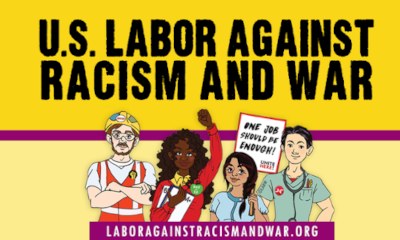
The reactionary, “anti-globalist,” anti-immigrant, xenophobic, and openly authoritarian politics of Trump/MAGA have gained a powerful base of support within a significant section of capital and amongst a wide swathe of working people in response to a pervasive sense of precariousness and instability building since the 2008 financial collapse and intensified by the COVID pandemic. For too many these events have been connected to the loss of power symbolized by our perpetual wars and inglorious retreats. Trump’s demagoguery posits simple “answers,” including unilateral US assertions of power without moral or ideological pretentions. Israel’s slaughter of Palestinians fits neatly in that picture, as does building the border wall. His opposition to NATO and global alliances enables him to project a rhetoric of “peace,” that hides the danger of greater war, just as his “pro-worker” rhetoric hides an anti-labor agenda.
When the Biden Administration attempts to counter that by its own assertion of the critical need to ramp up arms spending, and to maintain NATO and the whole panoply of Cold War and international financial institutions created to sustain US global hegemony, he both fails to counter Trump and undermines the social reform programs that are the only pathway to overcome the crisis in society. LBJ’s decision to prioritize war abroad over domestic reform laid the basis for Nixon, and later Reagan. Today we can see how support for Israel’s war undermines the Biden Administration’s goal of overcoming the challenge posed by the “MAGA” movement.
The images of dead bodies in Gaza bring to mind images of warplanes dropping napalm on Vietnam, reports of school children being shot in Soweto, of the mounting deaths strangling hope in Central America. We can only respond by remembering that the concentration camps; the destruction of unions, of socialist and communist parties, and dissenting churches, as well as the mass slaughter during World War II were overcome. As Len Chandler in a song from the era of the Civil Rights movement reminds us:
The seas are gettin’ stormy and the hour’s gettin’ late
If that ship starts seepin’ water you know how to bail
You can’t change the weather but you sure can change the sail
And our harbor looks much better when you’ve made it through a gale
So I guess I’ve gotta keep on keepin’ on.
Labor’s statements for a ceasefire points our ship of state in a direction we need to travel. It is critically important to push harder, turn words into action. We must connect that need to end war to a broader program of structural reform to control capital investment and recenter economic policy on public ownership rooted in community and workplace power. We must set a course to finally end systemic inequalities and address looming climate catastrophe.
For this to happen peace is paramount. Current realities dictate that unions need to and will support Biden over Trump, but labor needs to do so around its own course that challenges Biden’s limitations. Organizing to end US support of Israel’s war in Gaza, as part of a broader program to reduce military spending and take steps toward negotiated peace to end wars taking place in Europe, Africa, the Middle East is a means to recapture the hope that flickered briefly in 1945: that all people are entitled to live a life of dignity, equality, and peace. As the ceasefire resolution issued by the Coalition of Labor Union Women concludes:
“The time has come again for the labor movement to speak up and act out against the atrocities of war. We cannot become inured to the barbarism our species still resorts to when conflicts arise. As women, workers, veterans, and citizens of the world, we must continue to demand a peaceful world, and work to create it.” •


